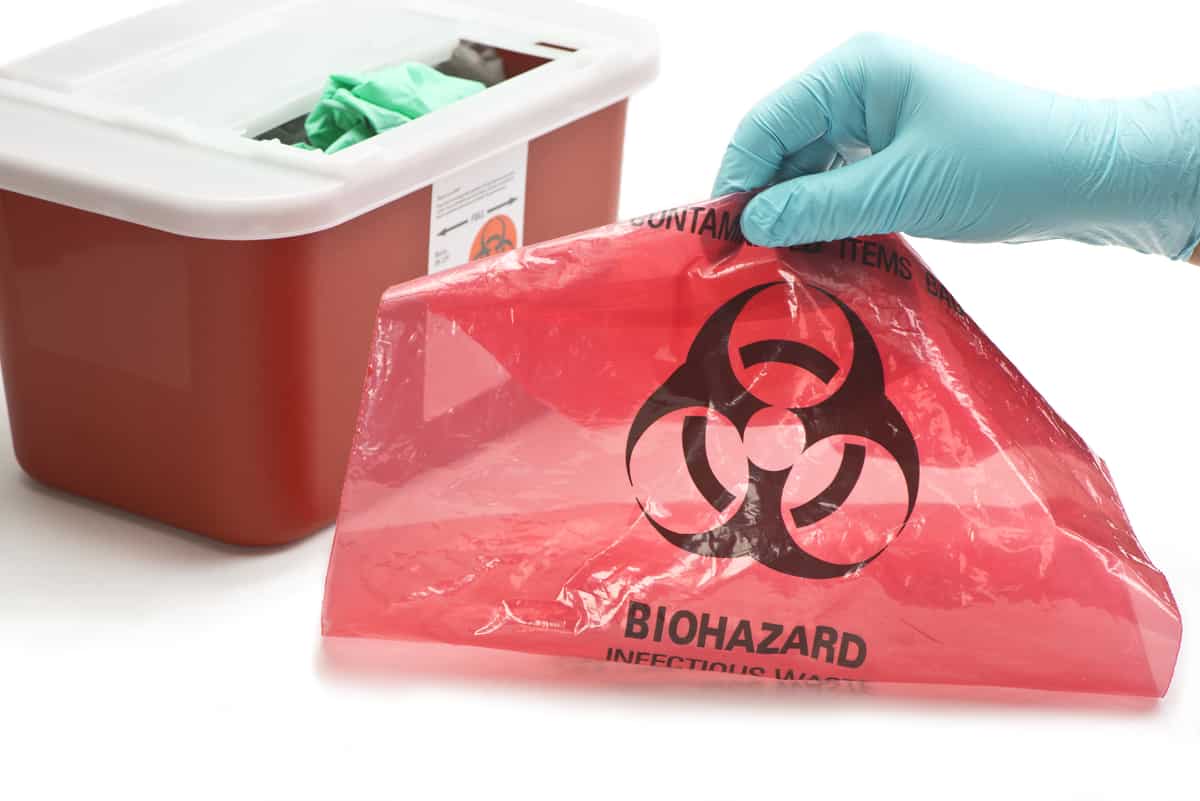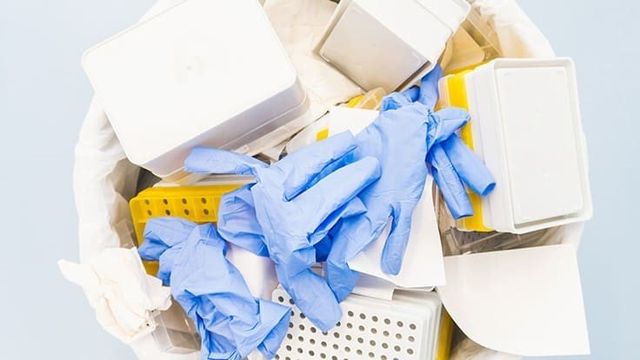Your Trusted Partner: Medical Waste Removal Services Tailored to Your Requirements
Your Trusted Partner: Medical Waste Removal Services Tailored to Your Requirements
Blog Article
Stay Ahead of Rules: Professional Advice on Medical Waste Disposal
In a globe where the medical care industry is continuously advancing, it is important for medical facilities to remain in advance of policies when it comes to the proper disposal of medical waste. From understanding the different categories of medical waste to implementing the right collection and partition techniques, this conversation will certainly supply important insights and actionable suggestions to help centers remain in advance of laws in the ever-changing landscape of clinical waste disposal.
Recognizing Clinical Waste Categories
Comprehending clinical waste groups is essential for correct disposal and monitoring in healthcare centers. Medical waste describes any kind of waste created by health care tasks that might pose a danger to public health or the setting. It is crucial to categorize clinical waste properly to guarantee its risk-free handling, disposal, transport, and treatment.
There are several groups of clinical waste that medical care facilities require to be accustomed to. One of the most common classifications include infectious waste, pathological waste, sharps waste, pharmaceutical waste, and chemical waste. Each group has details guidelines and guidelines for its appropriate monitoring and disposal.
Pathological waste refers to human tissues, organs, or body components that require unique handling and disposal. Drug waste consists of ended, unused, or contaminated medicines that require careful handling and disposal.
Remaining Up-To-Date With Regulatory Changes
Remaining existing with regulative changes is vital for healthcare centers to ensure conformity and appropriate monitoring of medical garbage disposal. medical waste removal services. With regulations continuously evolving, it is crucial for medical care centers to stay current to stay clear of penalties, fines, and possible harm to the setting and public wellness
To remain ahead of governing modifications, health care centers ought to establish a system for monitoring and monitoring updates. This can be done by registering for regulatory e-newsletters, participating in conferences and workshops, and actively joining industry associations. Furthermore, facilities must mark an employee or team in charge of remaining educated and disseminating information to relevant stakeholders.
Routine communication with regulatory firms is additionally essential. Healthcare centers must develop relationships with regional, state, and government firms to guarantee they understand any kind of modifications in policies that might affect their waste monitoring techniques. This can be done via normal conferences, engagement in public remark durations, and aggressive involvement with regulative agencies.
Moreover, healthcare centers ought to take into consideration partnering with waste monitoring business that specialize in medical waste disposal (medical waste disposal services with WasteX). These companies are usually skilled in the most recent guidelines and can supply assistance and support to ensure compliance
Applying Appropriate Collection and Partition Methods
To efficiently take care of clinical waste disposal, medical care centers should develop appropriate collection and partition approaches in accordance with governing guidelines. Implementing these methods guarantees the secure handling and disposal of possibly dangerous materials, protects the atmosphere, and reduces the danger of injuries and infections to healthcare employees and the basic public.
Proper collection and segregation methods entail making use of designated containers and labeling systems. Medical care facilities need to give plainly identified containers for various kinds of clinical waste, such as sharps, contagious waste, pharmaceutical waste, and non-hazardous waste. These containers ought to be color-coded and clearly significant to stay clear of complication and advertise easy recognition.
Additionally, medical care centers should train their personnel on the correct treatments for gathering and setting apart medical waste. This consists of informing them on the various sorts of waste, the appropriate containers to make use of, and the value of adhering to guidelines and guidelines. Routine training sessions and correspondence course need to be carried out to ensure that team participants stay updated on ideal methods.
Moreover, medical care centers ought to develop a system for routine collection and disposal of medical waste. This may include partnering with licensed waste management business that specialize in medical garbage disposal. These companies will guarantee that the gathered waste is transported and dealt with in conformity with governing demands.
Picking the Right Disposal Methods

Incineration is one of one of the most effective and common techniques for getting rid of specific types of medical waste, such as pathological waste and sharps. It includes the controlled burning of waste at high temperatures, minimizing it to ash. Incineration can release harmful contaminants right into the air and add to air contamination.

Chemical treatment entails the usage of chemicals to counteract the waste and decontaminate. Microwave therapy utilizes microwave energy to heat and sanitize the waste.
Making Certain Compliance With Documents and Training
After meticulously taking into consideration the suitable disposal approaches for medical waste, health care facilities must ensure conformity with guidelines and reduce environmental effect by implementing effective documents and training procedures. This action is crucial in keeping a safe and lasting environment for both healthcare employees and the public.

Training is just as important in making certain compliance with laws. Medical care employees that handle clinical waste needs to receive suitable training on waste segregation, dealing with, and disposal treatments. This training needs to cover subjects such as the correct use of personal protective tools, recognition of different kinds of waste, and the right disposal methods for every waste group. By supplying thorough training, medical care centers can equip their personnel to make enlightened decisions and minimize the risk of inappropriate garbage disposal.
Conclusion
To conclude, remaining ahead of laws in medical garbage click to investigate disposal is essential for health care centers. medical waste removal near me. Comprehending the various categories of medical waste, staying dig this upgraded with regulative modifications, implementing correct collection and segregation approaches, choosing the ideal disposal methods, and making sure conformity via paperwork and training are all crucial steps. By complying with these standards, health care organizations can successfully manage and get rid of of medical waste in a risk-free and responsible way
From recognizing the various classifications of medical waste to applying the ideal collection and segregation approaches, this conversation will certainly give valuable understandings and workable ideas to aid centers stay ahead of guidelines in the ever-changing landscape of medical waste disposal. - medical waste disposal services with WasteX
The most common classifications consist of transmittable waste, pathological waste, sharps waste, pharmaceutical waste, and chemical waste. Medical care facilities ought to supply plainly classified containers for different types of medical waste, such as sharps, infectious waste, pharmaceutical waste, and non-hazardous waste. Health care facilities must develop a thorough system to record and track all aspects of medical waste disposal, including types of waste generated, quantities, and disposal methods used. Healthcare workers that handle clinical waste needs to obtain ideal training on waste partition, taking care of, and disposal treatments.
Report this page